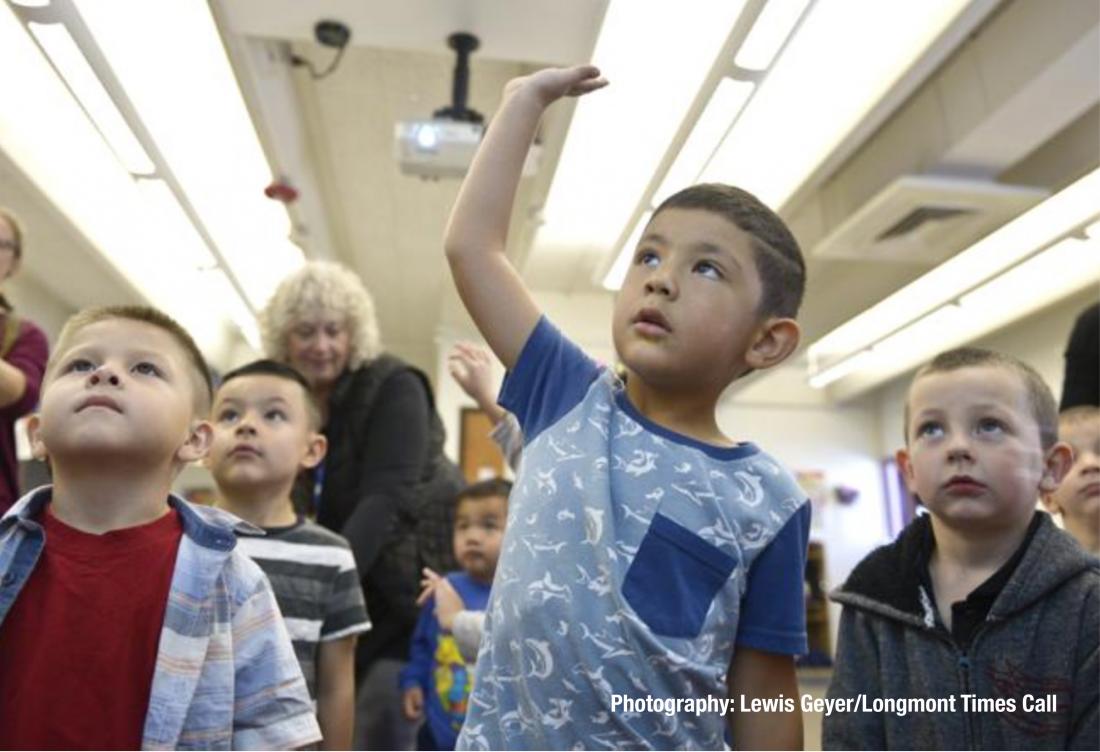Evaluating the Impact of a Tech-Based Early Childhood Vocabulary Program in the United States
- Students
- Student learning
- Early childhood education
Vocabulary is critical to literacy development in early childhood, yet large disparities in vocabulary knowledge persist between children from high-income and low-income backgrounds. Researchers evaluated the impact of a vocabulary improvement “edutainment” program for young children, Big Word Club, on children’s receptive vocabulary. Researchers found that the Big Word Club increased students’ knowledge and retention of words included in the program without detracting from other vocabulary development.
Policy issue
Vocabulary is a key component of literacy for young children and is critical for language development, reading comprehension, and development of knowledge in specialized areas.12 However, research suggests that there are substantial differences in vocabulary knowledge between children from high-income and low-income backgrounds by the age of three.3 Educators therefore advocate for vocabulary learning in early childhood education to ensure all students have the necessary skills and knowledge.
Educational media, or “edutainment,” is an engaging method to potentially increase vocabulary knowledge in young children. Edutainment attempts to make learning more fun and exciting to children than traditional education content by using stories or games that keep children’s attention. The most common forms of edutainment have been implemented through television programming rather than directly in schools. There has been limited research showing the impact of edutainment on learning outcomes. Can a classroom-based, short-form edutainment program increase vocabulary acquisition in early childhood?
Context of the evaluation
Big Word Club (BWC) is a classroom-based digital literacy program intended to increase the vocabulary of children in preschool and elementary school as a supplement to the standard classroom literacy curriculum. The program uses animated books, songs, and dance activities that introduce children to one new “big” word (e.g., “equator”) per day over the course of a school year. Classroom materials are customized by grade level and all lessons are under five minutes long. The program content is delivered on a web-based platform and can be used at any point in the day.
Student characteristics
The participating schools were all from Arizona, Colorado, or Texas and included both private and public schools. Most participants were students from Title Ⅰ schools, which are schools that receive federal financial assistance if there is a large percentage of students from low-income families. 55 percent of participating students also received free school lunches. Students averaged between five and six years old at the end of the school year and were split between preschool and kindergarten.

Details of the intervention
Researchers conducted a randomized evaluation of Big Word Club to assess the program’s impact on receptive vocabulary (i.e., the set of words a student can understand and to which a student can respond). Teachers across 47 schools volunteered to participate in the evaluation for the 2017-2018 school year. Randomization occurred at the school level, and each school was randomized into one of two groups:
- Big Word Club group (26 schools): The teachers in these schools received access to the BWC program and were instructed to use it as intended (one video per day alongside regular curriculum) for the school year.
- Comparison group (21 schools): The teachers in these schools did not receive access to the BWC and conducted class as usual.
To evaluate the impact of the program, an average of seventeen students from each school (for a total of 818 students in the study) took two vocabulary assessments four months (“post-test”) and six months (“follow-up test”) after the program started. The BWC-specific assessment included 38 words from the program. It was structured similarly to an additional assessment given six months after the program started, the Peabody Picture Vocabulary Test (PPVT), a common measure of more general early-childhood vocabulary. Researchers included the PPVT test to see if the BWC had any effect on students’ overall vocabulary in addition to the BWC words. For example, the BWC might increase student interest in learning new words, or conversely, negatively impact their vocabulary attainment of words not included in the program.
Results and policy lessons
Researchers found that the Big Word Club program increased students’ knowledge and retention of words included in the Big Word Club curriculum. There was also no significant difference in the PPVT scores between the BWC group and comparison group.
Big Word Club Vocabulary
After four months, those who received the program identified an average of 24.3 words out of 38 on the BWC assessment, while the comparison group identified 22.7 words on average, an increase of 4 percentage points (7 percent). These effects persisted six months after the program, at which point students who had access to the program scored 0.27 standard deviations higher in the BWC test than the students who did not have access. However, only 585 students of the original 818 were able to take the tests due to school absences and fatigue in being able to sit for the two tests taken six months after the program started.
General Vocabulary
Students who had access to the BWC scored 0.11 standard deviations more on the PPVT than control students, but this difference was not statistically significant. This result indicates that while BWC did not statistically improve students’ overall vocabulary, it also did not detract from or supplant vocabulary development.
BWC’s effect of the program on students’ vocabulary shows that light-touch, educational media can supplement classroom instruction to support students learning new vocabulary. The study’s results have been used by the Big Word Club to encourage Head Start centers and elementary schools to use the program.
